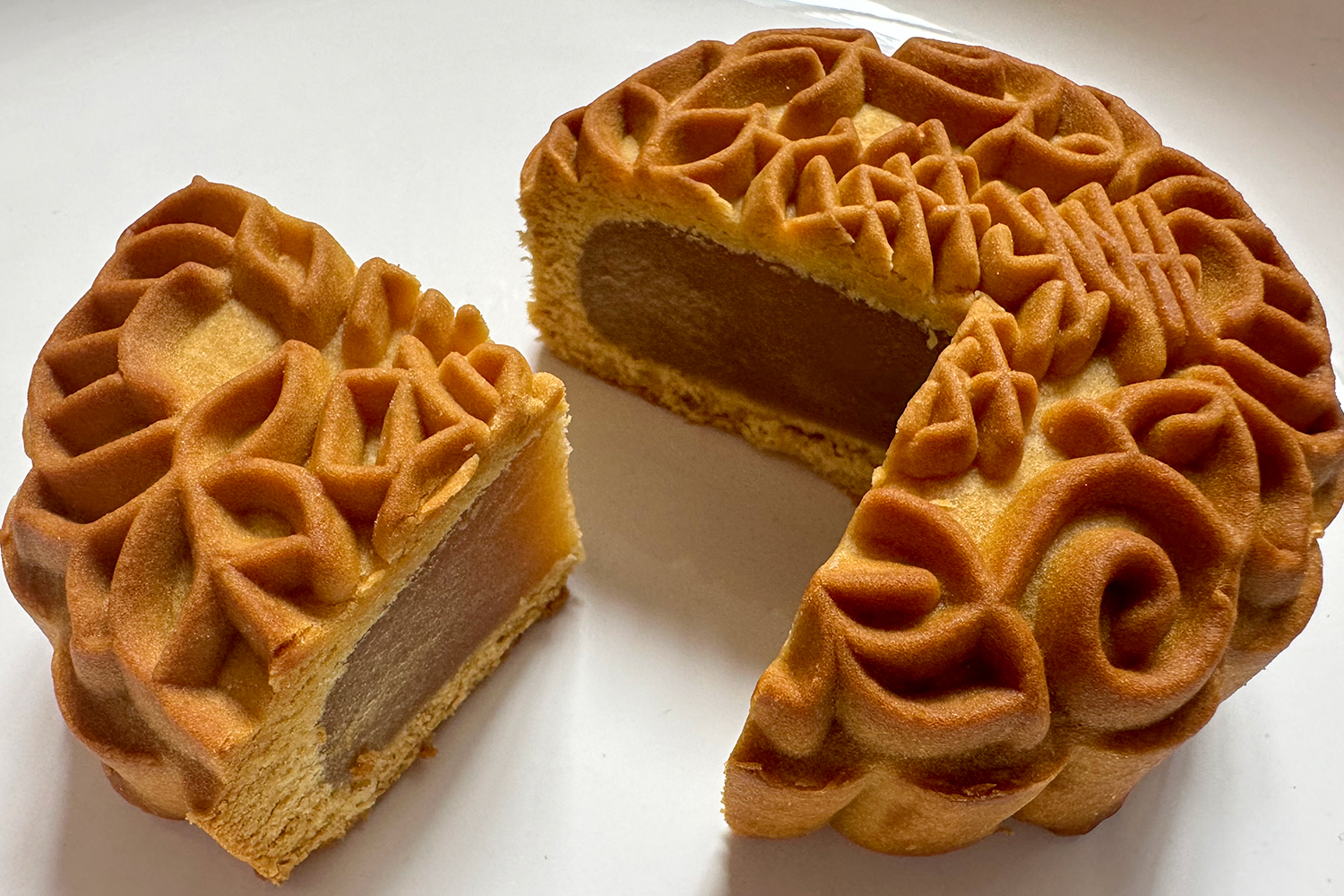
Taipei, Taiwan – As autumn approaches in many parts of Asia, that means one thing: boxes and boxes of mooncakes.
The small pastries are synonymous with the Mid-Autumn Festival and are handed out in colourful boxes to friends and colleagues.
It is not uncommon to see boxes stacked around offices at this time of year or long queues outside popular bakeries. Brands from Starbucks to luxury fashion house Louis Vuitton and the five-star Shangri-La hotel chain sell their own versions of the traditional gift, with some costing as much as $100 for a box of four.
A few years ago, China even ordered officials to stop handing out mooncakes as part of a crackdown on corruption.
Lots of time and effort goes into making, buying and sharing mooncakes.
Here’s what you need to know.
What is a mooncake?
When most people think of a mooncake, they think of a golden crusty pastry with a dense calorie-laden filling such as lotus paste or red bean – much like the mooncake emoji available on your phone – but they can vary in size, shape, and ingredients depending on where they are made.
“mooncakes are basically pastries, but in the old days, they were tied to offerings to the moon goddess,” Clarissa Wei, a Taiwan-based food writer and author of the new cookbook Made in Taiwan, told Al Jazeera.
“Most people think of the Cantonese style, but in Yunnan, they stuff it with rose, in Taiwan, ours is with mung bean and pork, and in Hong Kong, it’s lotus seed and maybe dried pork and salted egg yolk. But at its core, it’s a dense bite-size pastry.”
Wei says handing out mooncakes is not unlike the practice of giving fruit cakes over Christmas in many Western countries.
And much like fruit cake, mooncakes can also be divisive. For some, they are stodgy and cloyingly sweet. For others, heavenly. Mostly they are eaten in small slithers.
When and where are mooncakes handed out?
mooncakes are given out around the Mid-Autumn Festival, a holiday tied to the 15th day of the 8th month of the Chinese lunar calendar, or roughly around the time of the September equinox.
This year the holiday starts on September 29 and celebrations continue for several days depending on the country.
China claims credit for the festival, which reportedly dates to the Zhou dynasty (roughly 1050 BCE to – 221 BCE and originated as a post-harvest celebration.
In Chinese tradition, a full moon symbolises completeness and is associated with family reunion, hence the shape of the mooncake and the whole egg yolks that are often found inside.
Today, the holiday is also celebrated under varying names not only in China but also in Taiwan, Japan, Korea, Singapore, Vietnam, Malaysia, Indonesia, and Thailand – all places with varying degrees of historic Chinese cultural influence and sizeable communities of ethnic Chinese.
The holiday’s most common English variant names are the mooncake, Moon or Lantern Festival as it is also the time when lanterns are carried and displayed.
Some families hold moon-viewing and mooncake-eating parties during the festival.

What kind of mooncakes are for sale?
Originally, all mooncakes needed to be relatively dense because they were left at a shrine as an offering for a few hours before they could be eaten, according to Wei.
What was inside was also determined by what was available at harvest time.
These days, however, there are many kinds of mooncakes from the traditional flavours to the truly decadent.
Contemporary ingredients include fruit and tea flavours, ice cream, custard, cheesecake, chocolate and durian – the famously pungent spiky fruit beloved in many parts of Asia – while the design of both mooncake and box has grown increasingly elaborate.
It is even possible to buy mooncakes in the style of familiar faces like Hello Kitty or Totoro, the animated character from the Japanese film My Neighbor Totoro.
Why is the Hong Kong mooncake so iconic?
As with many things, Hong Kong and Cantonese culture have a slight leg up in the global culture zeitgeist due to patterns of Chinese migration.
Before the days of globalisation, people from the southern Chinese coastal provinces like Guangdong and Fujian were among the first to cross the seas in search of new opportunities.
After settling in places in Southeast Asia and Taiwan, southern Chinese were also some of the first to set up communities in Western cities such as Sydney, San Francisco, London, and New York, carrying their traditions and customs with them.

Hong Kong people, in particular, benefitted from living in a major port city.
The iconic status of Hong Kong or Cantonese-style mooncakes is the same reason many people might see a Hong Kong-style lion dance on the streets of London or New York at Lunar New Year or consider dishes from these regions as “Chinese food”.







